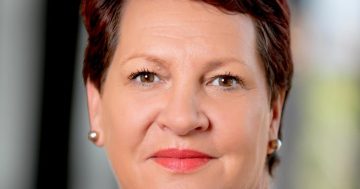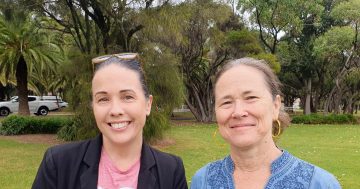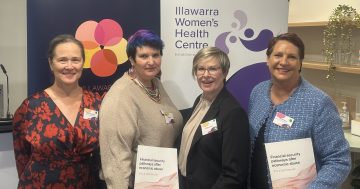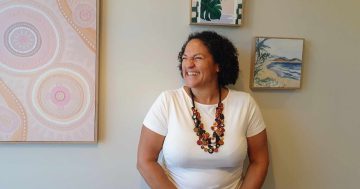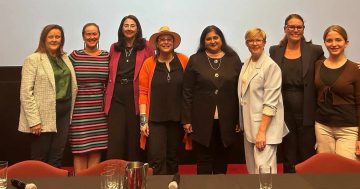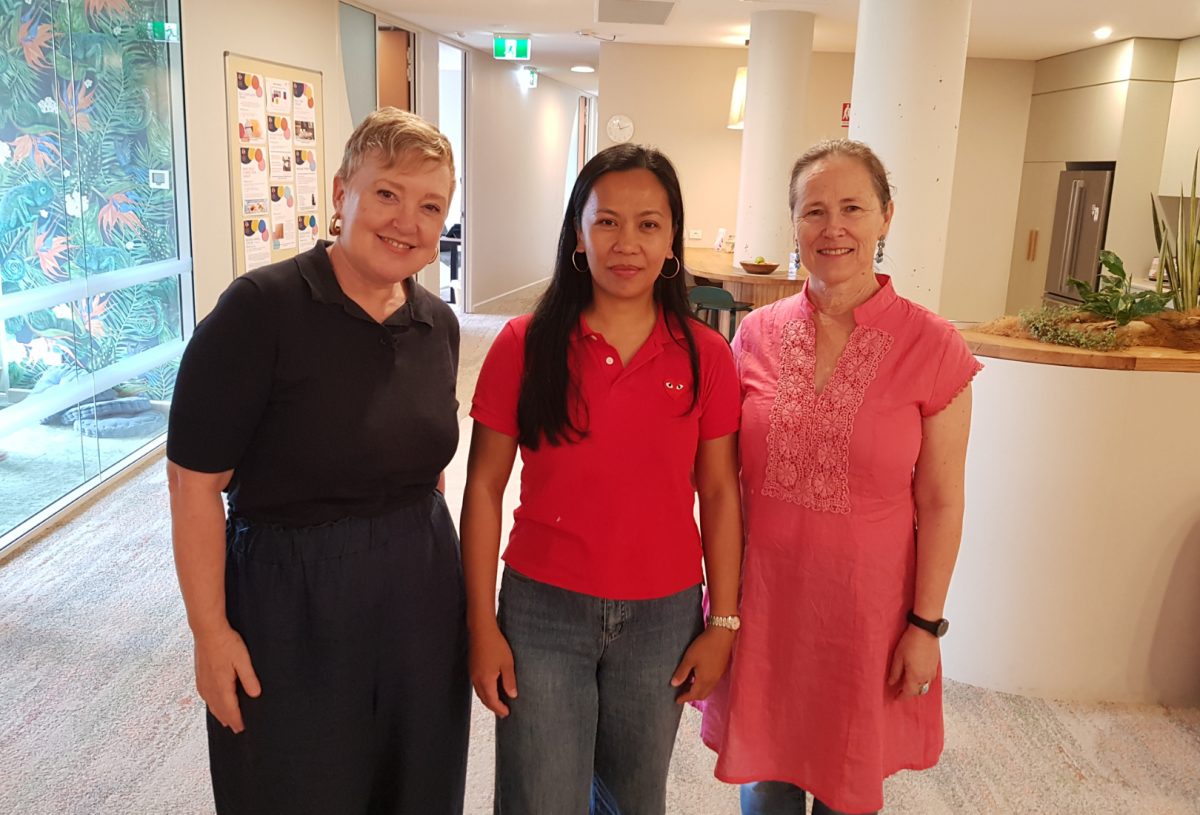
Margie Rahmann, Faith Labaro and Sally Stevenson. Photos: Kellie O’Brien.
Illawarra Women’s Trauma Recovery Centre has won three prestigious gongs at the 2025 NSW Regional Architecture Awards for its trauma-informed and culturally inclusive approach, setting a new standard in recovery spaces.
Led by Illawarra architectural practice Edmiston Jones and developed collaboratively with victim-survivors of domestic, family, and sexual violence and cultural input, the Shellharbour-based centre offers a safe, calming environment and serves as a prototype for future recovery centres across Australia.
Unveiled this month, the awards by the Australian Institute of Architects celebrate “the best of the best” architecture in regional NSW and included the Regional Medallion Award, Vision Award and Interior Architecture Award.
Edmiston Jones director and senior interior designer Margie Rahmann worked with the Illawarra Women’s Health Centre and its Trauma Recovery Centre team, Lived Experience Advisory Group and Aboriginal Women’s Reference Group to develop a calming, secure environment.
Margie said what set the project for the Australia-first centre apart was its community-driven co-design approach, which was a more powerful and meaningful way to work that ultimately produced a better outcome.
“Architecture is a team sport and works best when it is a team,” she said.
“It’s not just about ticking boxes or following a checklist. It’s about truly understanding the needs of the people who will inhabit these spaces and designing with their well-being in mind. That’s what makes the difference.
“If this win can help people be more cognisant or mindful of the effect their work is having on the community, then that’s a great thing.”
She said an example was the positioning of the front reception so it didn’t appear as a barrier, which came directly from the advisory group.
“It was such a surprise and it was also incredibly heartening to see the Institute of Architects recognising an interiors project, rather than a flash new building,” she said.
She said the Connecting to Country framework was led by Alison Page to provide informed cultural safety for Aboriginal women, with the design featuring symbolic elements like a coolamon in the ceiling.
“The centre, imagined as a turtle shell – protective externally and warm and inviting internally – prioritises a calming, secure environment for recovery,” she said.
Faith Labaro, a domestic violence victim-survivor and an advisory group member who collaborated on its design and functionality, said she was struck by the level of compassion and sensitivity shown by Margie and the team, who were careful to understand their experiences and what triggered them.
“She was so compassionate – she even cried during our meetings,” Faith said.
She said that empathetic approach allowed the co-design team to truly shape the centre, with their input directly reflected in the final design.
The warm textures, soothing colours and flowing layout provide a stark contrast to the clinical spaces she had encountered before, while curved handles, chairs and walls ensure a safe space for victim-survivors and their children.
“Things that we said were actually heard and in the design,” she said.
“Our experiences did not go to waste, because now we have a purpose of putting that out there so other women can benefit from it.”
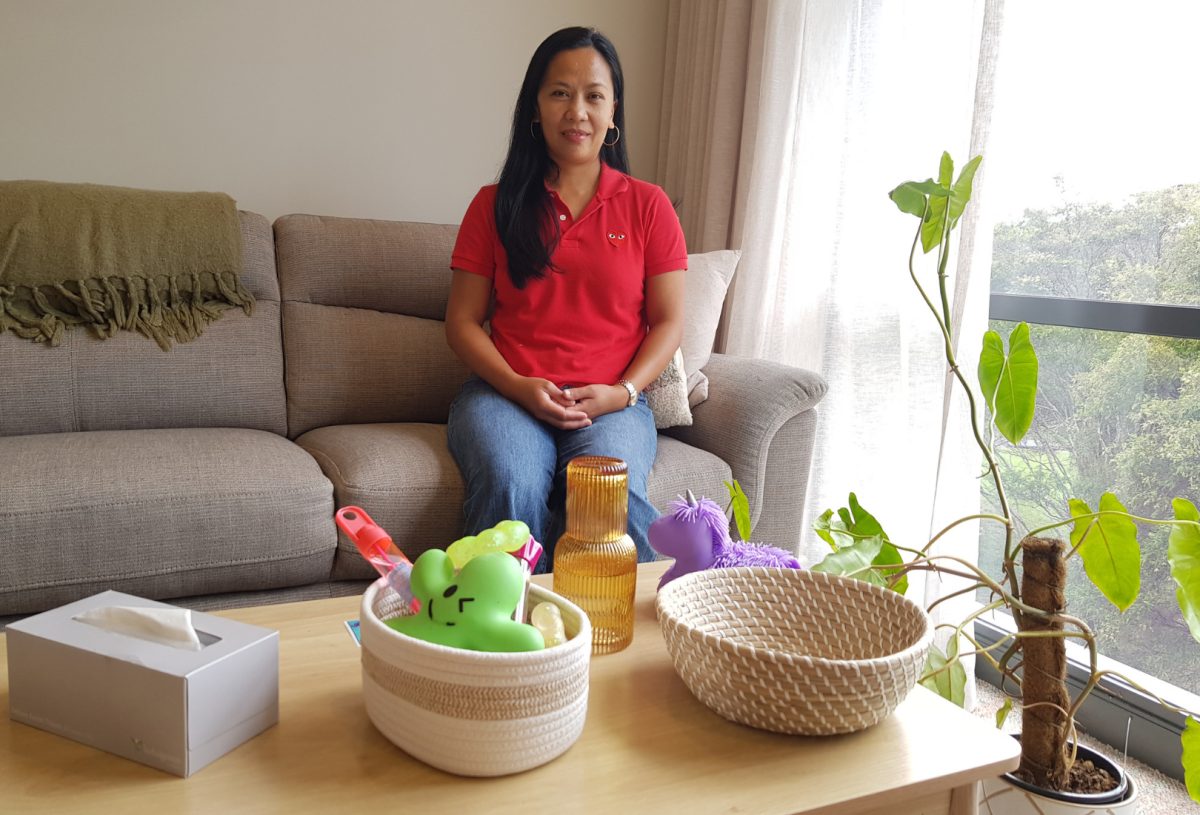
Faith Labaro taking a look at the centre she helped shape.
For Faith, the centre represents a profound shift from her own past experiences, creating a space like nothing she has seen before.
“If I had a centre like this when I was going through that experience, I probably would have felt a lot better,” she said.
“This just provides an oasis for women and that’s what we wanted to achieve, because we would have wanted this when we were in that trauma.
“When you’re living in a traumatic home, you want to go to a place where you feel like you can breathe.”
Another member, Nyssa Griffiths, said she was hopeful the experience and concept of the centre were replicated across Australia.
“As a victim stuck in the cycle that is DV, knowing that I have contributed, even in a small way to preventing others from being harmed further, means a lot,” she said.
Illawarra Women’s Health executive director Sally Stevenson AM said as a dedicated centre for women survivors of domestic, family and sexual violence, it was important the design was driven by women with lived experience and reflected their recovery and healing needs.
“For any future design in any kind of health or community setting, it shows there’s value in this process,” she said.
“Not only do you get a great outcome, but it is part of the healing process for those who were involved too.”
Ms Stevenson said co-design was a core part of the centre’s philosophy from the beginning, with their input, along with service providers and policy makers, having shaped everything from the physical build to the branding.
“The curved nature of the building was really important, because it’s about gentleness, but it also is important for visibility, because women who are hyper vigilant because they’ve been exposed to trauma, don’t want even the perception of somebody jumping out from around the corner,” she said.
Sally said the Aboriginal women’s group requested the coolamon because of its significance as a female instrument and modality for carrying babies and food.
Looking ahead, she said she was confident that as an interim site it would quickly demonstrate the effectiveness of their model of care to allow for a permanent site.
Judges said the winning cohort “shone a spotlight on design that has a deep connection to context and an intrinsic consideration of culture and country”.
Illawarra Women’s Trauma Recovery Centre, officially opened in September, is located in Shellharbour and is a project of the Illawarra Women’s Health Centre. Women can self refer or learn more about its programs.









